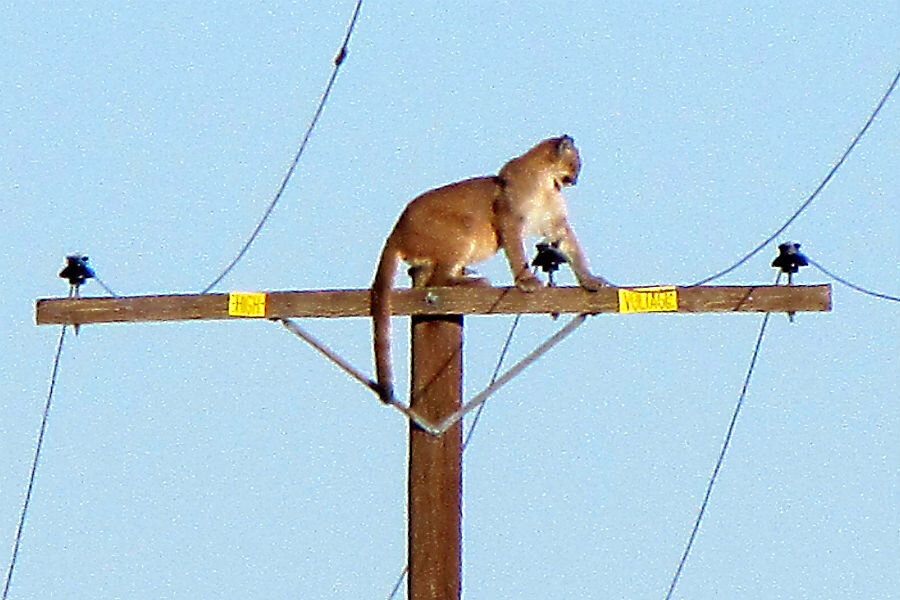Mountain lion has Calif. neighborhood's attention from atop power pole
Loading...
This big cat is certainly not afraid of heights.
A mountain lion was found Tuesday afternoon perched atop a 35-foot wooden utility pole in a Southern California neighborhood.
Officials say the heights-friendly feline was up there for 12 hours before descending on its own sometime either late Tuesday night or early Wednesday morning.
According to KTLA-TV, Andrew Hughan of the state Department of Fish and Wildlife said it remains unclear why the animal climbed the pole but it might have been because another mountain lion chased it up there for entering its territory.
“It could have been chased up there by another animal or frightened by a car on the road it was walking on,” Hughan told ABC News. “It really could’ve been anything.”
A local resident who lives across the street from the pole told the Victor Valley Daily Press the mountain lion was frightened by children returning home from school, and that’s why it clambered up the pole.
As the kids were coming home in the Lucerne Valley Unified School District school bus, resident Jose Ruis said, they were yelling with excitement and the big cat scurried up the pole.
While the cat was on the pole, the Fish and Wildlife officials summoned to the scene debated whether to subdue the animal by using a tranquilizer dart. It would have been a potential risk because of the height of its perch, Hughan said. Once hit with a tranquilizer, it would have fallen to the ground or into the power lines.
“We’re happy we didn’t have to plan that out,” Hughan said. “Trying to get a mountain lion off a utility pole would have been a really interesting challenge. If we shot it, it would’ve fallen and died.”
Though the Fish and Wildlife spokesman said his department has never encountered a situation like this, mountain cats, also known as cougars and panthers, are known to stumble into populated areas in Southern California.
On the same afternoon, another big cat sighting was reported about 20 miles away. It was a few blocks from the district’s elementary school, causing a brief lockdown Wednesday.
According to the California Department of Fish and Wildlife, hundreds of mountain lion sightings are reported every year in the state. It’s rare that these ever become dangerous situations, as less than three percent of these cases turn out to be actual public safety threats.
Mountain lions are shy, solitary creatures. From their nose to end of the tail, adult cougars can measure up to 8 feet long. There’s an estimated 5,000 of the big cats roaming in California, and that number has remained stable in the past few years.
Historically, they were considered by the State of California a “bountied predator.” Between 1907 and 1963, the state tried to level down the population by offering monetary incentives for killing them. Then mountain lions were made available to trophy hunting as their status changed to "big game.” Finally, in 1990, Proposition 117 banned almost all killings of the animal in California.








